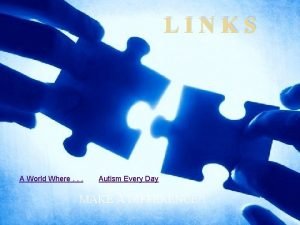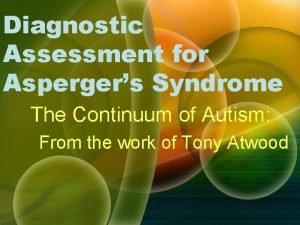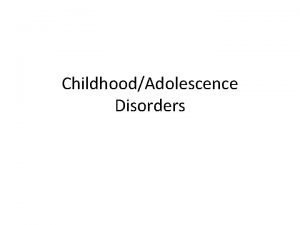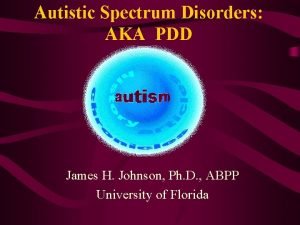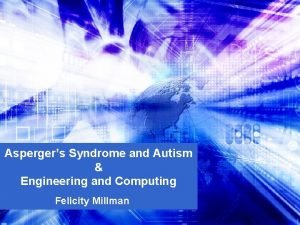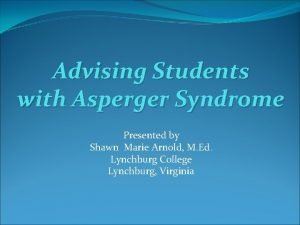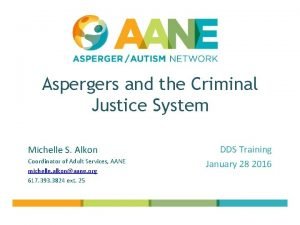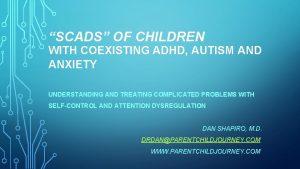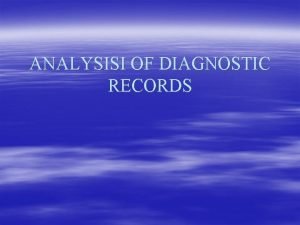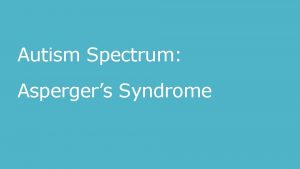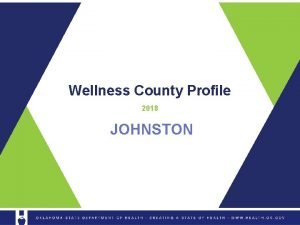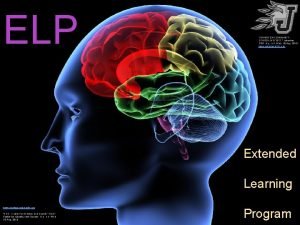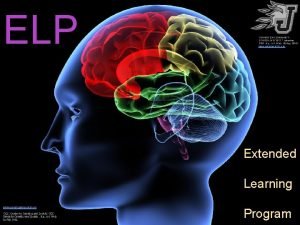Aspergers Syndrome Christopher Johnston Definition Aspergers Syndrome AS












- Slides: 12

Asperger’s Syndrome Christopher Johnston

Definition Asperger’s Syndrome (AS) is a developmental disability that is defined by impairments in social relationships, verbal and nonverbal communication, and by restrictive, repetitive patterns of behaviors, interests, and activities.

Background Identified in 1944 by Hans Asperger. (Austria) § Brought to the attention of the English -speaking world in 1980 by Dr. Lorna Wing. § Was not added to the Diagnostic and Statistics Manual of the American Psychiatric Association until 1994. § “Autism’s Shadow” §

Causes There seems to be a hereditary component § Environmental factors that affect brain development might play a role § Not caused by: Emotional deprivation § Bad parenting §

Incidence Rates § 48 out every 10, 000 children (Kadesjo, Gillberg, & Nagberg, 1999)

Assessment Information § Psychosocial evaluation when symptoms were first recognized § development of motor skills and language patterns § other aspects of the child's personality and behavior (including favorite activities, unusual habits, preoccupations, etc. ). § past and present problems in social interaction and development of friendships §

Characteristics § § § § Marked delay in non-verbal behaviors Impairments in establishing peer relationships Delays in social reciprocity Preoccupation with one restricted area of interest Inflexibility or rigidity, sticking to a set, sometimes non-functional routine; stereo-typed and repetitive motor movements Preoccupation with parts of objects Peculiarities in speech

Instructional Ideas § § § § Be careful in classroom seating assignments Use the “peer buddy” system Avoid self-selection in group work Carefully consider the maturity of the group members involved Provide “safe haven” or quiet area Explain metaphor and sarcasm use concretely Use “social stories” for providing directions Vigorously but respectfully maintain class rules and other boundaries

Other treatments § § § Parent education and training Social skills training Language therapy Sensory integration training for younger children, usually performed by an occupational therapist, in which a child is desensitized to stimuli to which he is overly sensitive Psychotherapy or behavioral/cognitive therapy for older children

Technology § § § Visuals Graphics Models, manipulatives Computers The Internet

Resources Adreo, D. & Stella, J. (2001). Transition to middle and high school: Increasing the success of students with Asperger’s Syndrome. Intervention in School and Clinic, 36(5), 266 -271. Barnill, G. P. (2001) What is Asperger’s Syndrome? Intervention in School and Clinic, 36(5), 259 -265. Maag, J. W. & Katsiyannis, A. (2000). Recent legal and policy developments in special education. NASSP Bulletin 84(613), 1 -8. Marks, S. U. , et al. (1999). Social skills for social ills: Supporting the social skills development of adolescents with Asperger’s Syndrome. Teaching Exceptional Children, 32(2), 56 -61. Safron, J. S. (2002). Supporting students with Asperger’s Syndrome in general education. Teaching Exceptional Children, 34(5), 60 -66.

Resources continued Attwood, T. (1998). Asperger’s Syndrome: A guide for parents and professionals. Philadelphia, PA: Jessica Kingsley Publishers, Ltd.
 Our teacher will go to leipzig tomorrow
Our teacher will go to leipzig tomorrow Whats aspergers syndrom
Whats aspergers syndrom Aspergers example
Aspergers example Aspergers assessment
Aspergers assessment Nursing diagnosis for mental retardation
Nursing diagnosis for mental retardation What is aspergers vs autism
What is aspergers vs autism Is aspergers genetic
Is aspergers genetic Strengths of aspergers
Strengths of aspergers Social skills training for aspergers
Social skills training for aspergers Aspergers and criminal behavior
Aspergers and criminal behavior Aspergers vs autism
Aspergers vs autism Aspergers
Aspergers Tanaka johnston analysis
Tanaka johnston analysis

